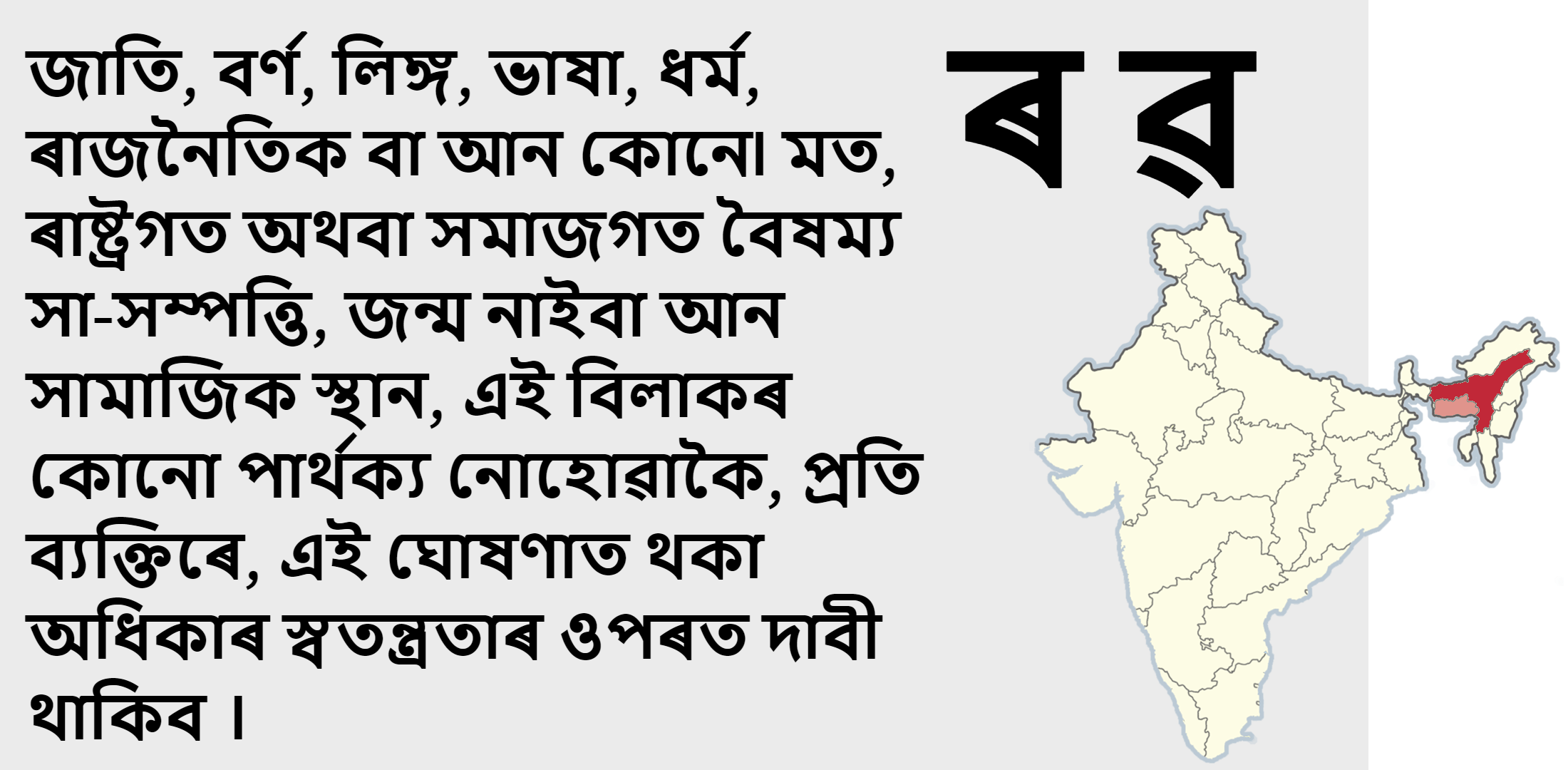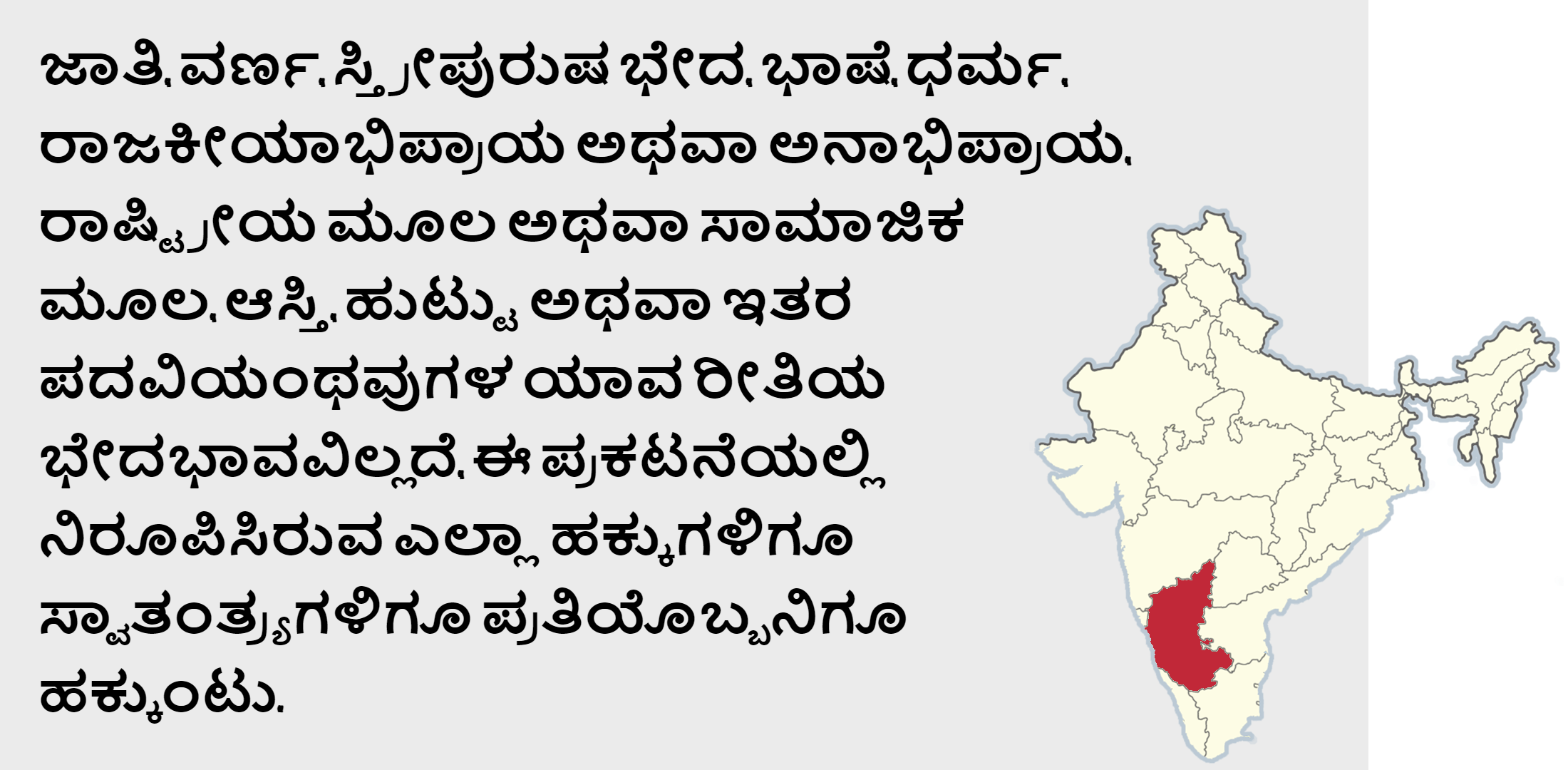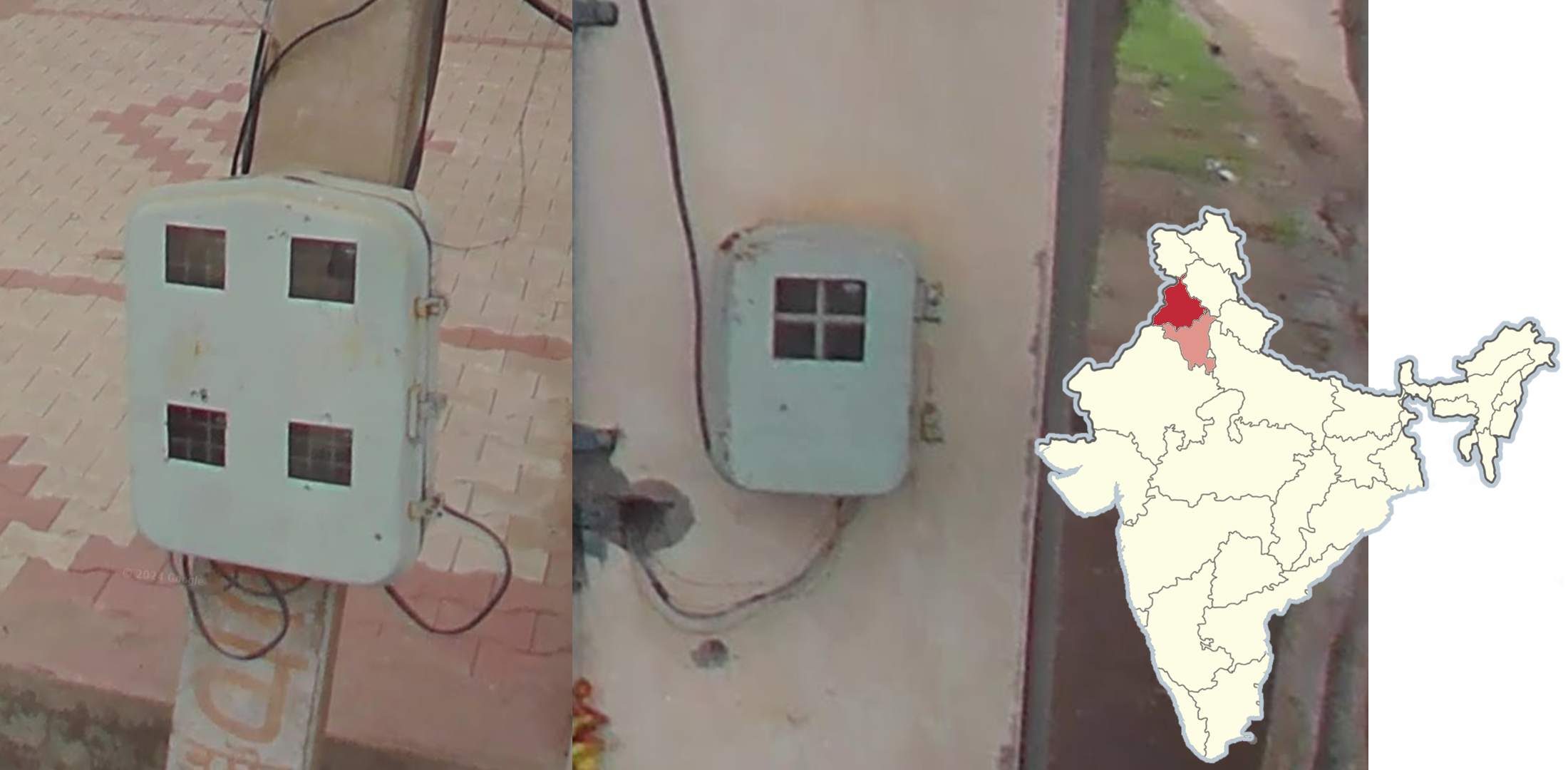
India
The vast majority of the coverage in India was taken with what’s commonly referred to as “shitcam”, which is a low-quality camera that can typically be recognised by the brownish colours and often, but not always, by a large circular blur covering the Street View car.
NOTE: Within Asia, shitcam coverage is also common in Cambodia and can rarely be seen in Sri Lanka and Bangladesh.
Hindi is the most common language in India and can be found in many central and northern regions. It uses the Devanagari script, which can be recognised by the line going through the top of each word and the straight vertical lines found in the majority of all letters.
Punjabi can be found in Punjab in northwestern India. While the script looks somewhat similar to Hindi, it can generally be differentiated by the softer shape of the letters and the horizontal bar being broken over certain letters. It also has some distinctly different features, such as the letters ਨ, ਲ and ਅ as well as a diacritic in the shape of a soft curve beneath a letter.
Kannada is found in Karnataka and has a script with a lot of smooth curves and small circles. It is very similar to the Telugu script, with Telugu having one additional feature described in the next tip. Many characters also feature a distinct squiggly tail in the top right corner, which is less common in Telugu.
The Oriya script is found in Odisha and has a curvy look, with many letters having wide semi-circles covering the top. Many letters have a distinct diacritic in the shape of a wide curve above the top of the letter. A useful mnemonic is that the shape of the characters resembles a skull emoji.
Yellow tuk tuks with black roofs are common in the southern Indian states of Telangana, Andhra Pradesh, and Tamil Nadu.
NOTE: They can also rarely be found elsewhere.
Concrete holey poles are unique to Gujarat and the Union territory of Daman and Diu, and Dadra and Nagar Haveli.
Gujarat uses a variety of poletops, some of which can be used to identify other states. Beware that holey poles generally take precedence over poletop metas.
NOTE: They are rarely found in other states especially Maharashtra, Madhya Pradesh, and Chhattisgarh.
Poles divided in two sections, in a similar fashion to Brazilian poles, are common in Andhra Pradesh and Telangana.
Thin grey metal poles are seen all over northeastern India and in the Himalayan region of Uttarakhand and Himachal Pradesh. You will commonly see two of these poles in close proximity.
In Karnataka, and sometimes in Haryana, you can find trident poletops on concrete poles where the central insulator is attached directly to the top of the pole, while the other two are attached to a horizontal crossbar positioned slightly further down. There is also a variant having several bars instead of one.
A connector on the pole which looks like an upside down trapezoid is most common in Chhattisgarh and somewhat common in Meghalaya, Tripura and Maharashtra, but can rarely be found in many other states.
NOTE: They can also be paired with Holey Poles in Gujarat and Ladder Poles in Andhra Pradesh, thus only use the trapezoid when no other pole meta is present.
In Assam, Meghalaya and Mizoram you commonly see poles with two crossbars, each with two insulators. If there are more than two bars, you should be in Meghalaya or Mizoram.
NOTE: They can rarely be seen in other states.
Large hip roofs made of corrugated sheet metal are found in West Bengal and adjacent areas in Bihar and Odisha.
Houses or huts with thatched roofs are mainly found along the east coast and northern plains. Large hay mounds are also generally more common in this region. Note that thatched roofs from Uttar Pradesh to Odisha tend to be made of fine pieces of hay whereas thatched roofs from Odisha to Tamil Nadu tend to be made of dried palm fans.
Gurdwaras, which can typically be recognised by their white domes and ornate walls, are most common in Punjab. You can also sometimes recognise them by the Sikh Khanda symbol, which represents the religion.


























































